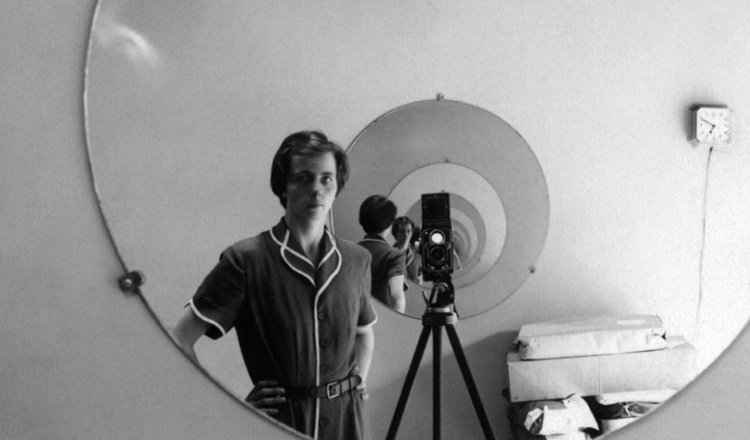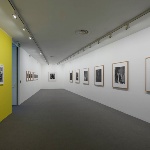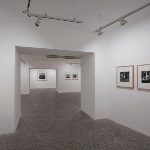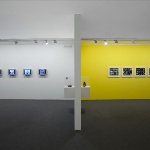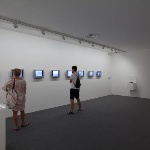
Main site sections
Resources
Vivian Maier
Street Photographer
10.07
-
18.10.2015
Opening: 10 July
After the United States, the fascination of Vivian Maier is enchanting Europe.
A nanny for New York's and Chicago's wealthy families starting from the 1950s, for over five decades she shot life in the streets of the cities where she lived, without ever making her work known. Never an exhibition, not even a marginal one, never a publication.
What she has left us is an enormous archive, with more than 150,000 negatives, a multitude of undeveloped Super 8 or 16mm footage, recordings, notes and other papers of different kinds that the "French" nanny (her mother came from the Provençal Alps) accumulated in her rooms, jealously hoarding it all.
Later confined to a storeroom, the material was confiscated in 2007 due to unpaid rent and then discovered by the young John Maloof at an auction in Chicago.
The exhibition at the MAN of Nuoro, curated by Anne Morin and organized together with diChroma Photography, will be the first exhibition of Vivian Maier's work in an Italian public institution.
Starting from the material collected by John Maloof, the project for the exhibition provides an overview of Vivian Maier's work, emphasizing the key elements of her poetics, such as the obsession for documentation and accumulation, fundamental in the construction of her true artistic as well as biographic profile.
Together with 120 photographs among the most important in Maloof's archive, shot between the early years of the 1950s and the end of the 1960s, the exhibition also presents a series of Super 8 films and a selection of colour photographs taken starting from the middle of the 1960s. With no storyline or camera movements, the footage reveals her way of approaching her subject and provides useful clues in interpreting her work as a photographer.
Instead, the shots from the 1970s reveal the change in her viewpoint, when she traded her Rolleiflex for a Leica, which obliged her to raise the camera from waist to eye level, offering her new possibilities for sight and narration.
The exhibition will also be enhanced by a series of contact prints, never before exhibited, useful in understanding the vision and development of this American photographer.
What enraptures the public, even before her photographs, is the story of "Nanny Vivian”, perfect for an existential novel or the plot of a wry comedy; it is so unusual, so fascinating that it does not seem real.
But beyond the story, beyond the biographical notes, the big-little secrets revealed by those who knew her, beyond her representation as an eccentric, reserved woman, strict and curious like few others, the custodian of a mystery still to be revealed, beyond all else stands the great photography of Vivian Maier, on whom much remains to be said.
For the most part, Vivian Maier took her photos in her spare time and, to judge from the results, we can surmise that in that period she did nothing else. Her favourite subjects were the streets and people, more rarely architecture, objects and landscapes.
She shot what suddenly appeared before her, whether it was strange, unusual, worthy of note or the commonest of everyday acts. Her world was "the others", strangers, the anonymous city folk with whom she came into contact for fleeting moments, always maintaining a certain distance which allowed her to turn the subjects portrayed unknowing into little-big stories of no importance.
But from time to time, in some of her more daring compositions, Vivian Maier made herself visible, she stepped over the threshold onto the stage to become part of the story. The reflection of her face on a window pane, the projection of her shadow on the ground, her silhouette appears on the edges of many images, almost always broken by shadows or reflections, with the somewhat obsessive insistence of one who, together with an idea of the world, is above all in search of oneself. In this endless investigation she sometimes involved the children she was in care of, forcing them to follow her around the city, in often degraded neighbourhoods of New York or Chicago. To a sensitive and kindly glance at the humble and outcast, she added a sarcastic vein evident in many of her snapshots, aimed randomly at all, from the wealthy members of the bourgeoisie in the good neighbourhoods to the drifters on the outskirts.
“Of Vivian Maier", states Lorenzo Giusti, MAN's director, "today we speak as a great 20th-century photographer, on the same level as the masters of street photography, from Alfred Eisenstaedt to Robert Frank, from Diane Arbus to Lisette Model. But the great museums find it difficult to legitimize her work, both because in her entire lifetime she had not a single occasion to exhibit it, and owing to their pervasive - and legitimate - diffidence towards the activity of the 'amateurs'. But it is no secret that the museums always arrive a bit late.
Of Vivian Maier's work we are captivated not only by her capacity for observation, the watchful eye alert to every variation of the whole, her talent for composition and framing. What is most impressive is the ease with which she passes from one register to another, from current events to tragedy, to the absurd, always resolutely faithful to her eye. Hers is a voice for a long time out of the chorus, but without doubt in tune”.

